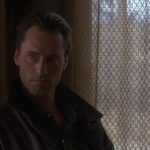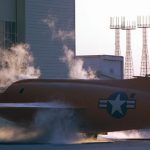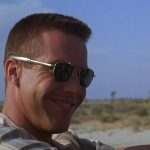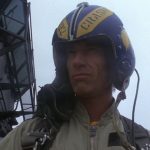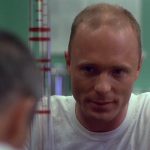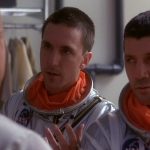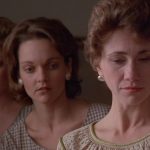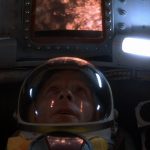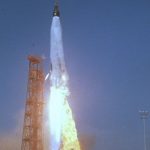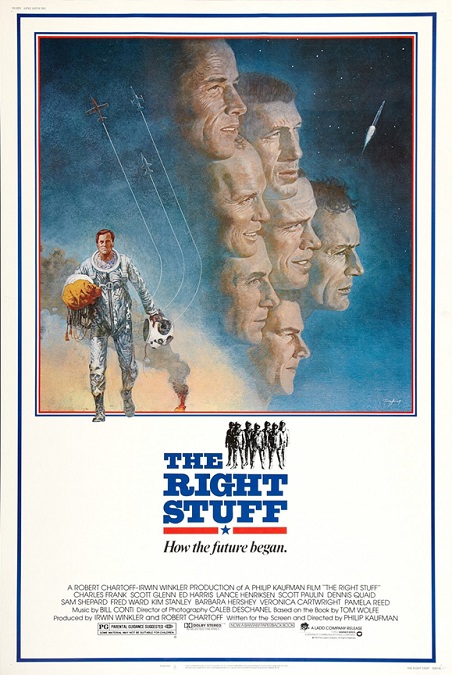
The Right Stuff – 1983
Finally, Hollywood has decided to make another epic. In recent years, I have noticed a trend in which smaller, self-contained films are being made. Just look at the movies that have been nominated in the 80s:Tootsie, The Dresser, The Big Chill. Even E.T. and Raiders of the Lost Ark can’t be considered epics. But the Right Stuff does it, and does it right.
The movie is about the men who were the beginning of the American Space Program. The film starts out as Chuck Yeager, played by Sam Shepard, is risking his life to break the sound barrier in experimental aircraft. His wife, played by Barbara Hershey had no choice but to sit home and try not to worry. Today, flying faster than the speed of sound is a casual occurrence that happens every day, but back in 1947, there were men who said that it couldn’t be done.
It was a time in history when America was competing with Russia to see who could win the Space Race. And as we all know, America didn’t always win. But our failure to keep up with the Russian rocket scientists inspired us to push ourselves, as a nation, to reach higher and higher. We reached for the stars, and only the best of the best pilots were chosen to be the men who would touch them.
Yeager’s contribution was incredibly important. He was a man of bravery and determination. But the men who came after him were just as courageous and ready to risk their lives to achieve what had never before been done. And that is what The Right Stuff was. It was a dramatized telling of the powerful story of America’s first astronauts, their years of rigorous training, their personal sacrifices, their unwavering commitments to the space program, their successes, and their failures. But the movie also spent some time telling the untold tales of the women who supported them, their wives, showing a little of what they endured as their husbands risked their lives to achieve their dangerous goals. I liked that the women were not ignored.
The cast was fantastic. Ed Harris played John Glen, Fred Ward played Gus Grissom, Denis Quaid played Gordon Cooper, Scott Glenn played Alan Shepard, Lance Henriksen played Walter Schirra, Charles Frank played Scott Carpenter, and Scott Paulin played Donald Slayton. These seven men were the first astronauts chosen by NASA, handpicked from the Air Force, the Navy, and the Marines. They were all important, but the film really concentrated on Shepard, Grissom, Glenn, and Cooper because they were the first four American Men to go into outer space. Their wives, Mrs. Sheperd, played by Kathy Baker, Mrs. Grissom, played by Veronica Cartwright, Mrs. Glenn, played by Mary Jo Deschanel, and Mrs. Cooper, played by Pamela Reed, all had smaller parts that were no less important to the film. Again, the casting was spot on.
I like that the film was just as honest about the failures as well as the successes of the American Space program. I did a little bit of research about the overall accuracy of the movie and discovered that, for the most part, the accuracy was there. The little things they changed were pretty insignificant. For example, in the film, there is a scene in which Grissom and Cooper talk about flying at Langley Air Force Base. In reality, neither of them had ever flown there. But the detail was minor, and it helped to establish a special bond of friendship between the characters. I’m OK with that because it made for better drama.
And here are two little points of interest to anyone watching the movie. First, Gus Grissom was blamed panicking and manually blowing the hatch of his capsule after splashdown. He claimed that he had not made the error and was called a liar. Before the film was completed, it was proven that he had told the truth. It had blown off on its own because of mechanical failure. But the movie left his honesty in question because in real life, nobody had believed him at the time.
And second, in real life, the mystery of John Glenn’s “fireflies” was solved in 1962 by Scott Carpenter on Aurora 7. The flying particles of light were tiny pieces of frost from the side of the spacecraft. Condensation had gathered on the vessel as it had passed through the cold orbital darkness. When the craft came into the sunlight again, the flakes of frost came off and floated around the capsule, illuminated by the sun to look like glowing particles.
